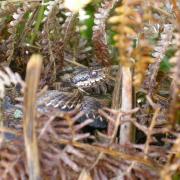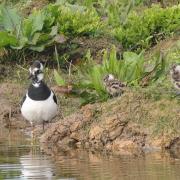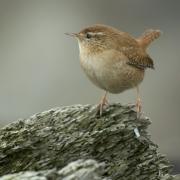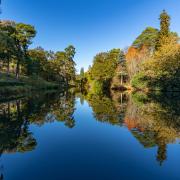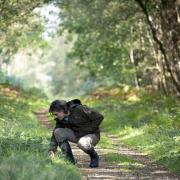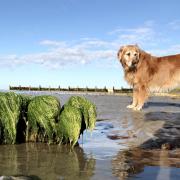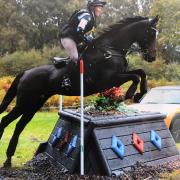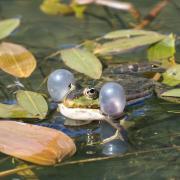Responsible tourism is gaining momentum. East Sussex man Ian Wood spends several weeks a year in Borneo, working to conserve the orangutan population

As most of you will know, orangutans – along with the forests that they inhabit – are seriously threatened. There are two different species of these great apes; the Sumatran and Borneo, with the former classified as critically endangered and the latter endangered. Whilst current figures show about 6,300 and 45,000 left in the wild respectively, many remaining populations are fragmented and it’s now thought that there are only about a dozen viable groups left in Sumatra. The situation in Borneo is better, but lots of orangutans live in forest outside of national parks where habitat loss is still rife. Add in the fact that many national parks don’t always offer the protection that you might expect and you’ll see why the overall situation is bleak.
My fascination with orangutans began about 20 years ago when I stumbled across a population whilst exploring a remote area of rainforest in Indonesia. The expression “a life-changing experience” is overused to the point of cliché in travel brochures. But my first encounter with orangutans was undoubtedly that – life before meeting with these great apes and life after was certainly different. A desire to do something positive led me to visit Tanjung Puting National Park in Boneo to explore the possibilities of a fundraising venture with the Orangutan Foundation.
Since then I have spent several weeks each year in this part of Borneo taking small groups of people on a personal tour of the park, with the profits donated to the Orangutan Foundation.
Opportunities for close encounters with orangutans along with a huge array of other wildlife are immense. The reserve, which lies on a peninsula jutting out into the Java sea, covers an area of 416,000 hectares, which is roughly equivalent to the size of Cornwall. And with a wild population of about 4,000 orangutans thriving in a well-protected forest, it offers genuine hope for the long-term survival of one of our closest relatives in the animal kingdom.
There are no roads in Tanjung Puting so all travel is by river. Based at a rainforest lodge, days are spent gently chugging along gorgeous waterways in our comfortable boat, interspersed with walks into the verdant forest. A number of orangutan feeding platforms have been built in the jungle, where fruit is placed at certain times of day. These were originally set up to provide supplementary food for orangutans that had been re-released into the park but now the lure of an easy meal guarantees staggeringly personal encounters with these iconic apes – at the Camp Leakey research centre it’s not uncommon to have to literally step out of their way.
There is something about exchanging eye contact with these peaceful vegetarians that imbues a deep sense of connection. Orangutans are a keystone species and by default, if we can protect them, we also save literally millions of insects, thousands of plants and hundreds of birds and mammal species.
Daily sightings of other primates are virtually guaranteed in Tanjung Puting, including bizarre-looking Proboscis monkeys. With bulbous noses and pot bellies, they gather in small harems in trees by the side of the rivers in late afternoon. Although dusk is a great time to observe them, some of my favourite encounters have been in the early morning, when the mist clings to the surface of the water. As the sun rises, the monkeys start their day, often leaping spectacularly from tree to tree. Occasionally, they will even cross the river: hurling themselves from branches and crashing into the water, then frantically swimming across, hoping to avoid the crocodiles lurking in the swamp.
Back at the rainforest lodge there is a resident troop of long-tailed macaques that provide background percussion to your stay by scampering across the roofs. But be warned – they are so habituated here that if you leave your door open for any length of time they are likely to raid your room. With nearly 200 species of birds recorded you’ll also see many feathered friends – from the majestic rhinoceros hornbill flying overhead to a vibrant flash of colour as a blue-eared kingfisher darts along the river.
But as impressive as the other wildlife is, I’d wager that it will be your encounters with my orange friends that will leave a permanent imprint on your soul. You’ll wonder at the intimacy of watching a baby orangutan breastfeeding a few metres away and marvel at the raw strength and power of a dominant male as he swings through the trees. Perhaps best of all, you can travel in the knowledge that your trip has directly contributed to the conservation of these great apes.
For more information on these tours: www.agoodplace.co.ukDetails of the work of the Orangutan Foundation can be found at: www.orangutan.org.uk--------------------------------------------------
Read on
Mike Russell & Jess Price of Sussex Wildlife Trust on species making Sussex their home and the arrival of the NightjarMike Russell of Sussex Wildlife Trust on the newly refilled pond at Woods MillMike Russell of Sussex Wildlife Trust on his trip to Lesvos




